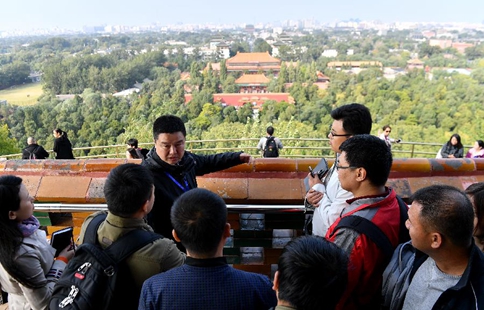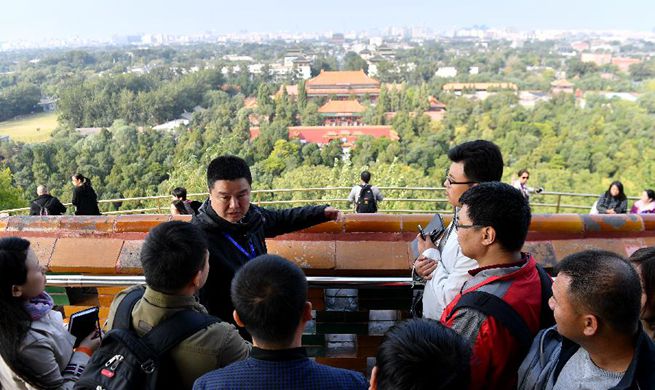KUALA LUMPUR, Oct. 13 (Xinhua) -- Millions of Chinese people made overseas travel during the eight-day Golden Week holiday in early October.
With that in mind, many Southeast Asian tourism boards are trying their best to lure Chinese tourists, the largest source of foreign tourists in this region, as seen in their eye-catching taglines such as "Malaysia, Truly Asia" "Amazing Thailand" and "Your Singapore."
But for Malaysia, which used to rank the ninth in the most visited country in the world in 2010 but slid to 12th in 2016, it could face an uphill battle after it was replaced by Thailand in the ranking in last year, according to the World Tourism Organization (UNWTO).
In an interview with Xinhua, the Malaysian Tourism Promotion Board or Tourism Malaysia's chairman Siew Ka Wei listed the lacking of point-to-point flight connectivity to tourism resorts and flight cancellations, among others, as the main challenges.
"However, we are making progress in responding to the challenges by easing the visa rules, engaging in smart partnerships with airlines, working with private sectors and maximizing the use of digital marketing," said Siew, a veteran businessman who has become the leader of the board since September last year.
To boost Chinese tourists arrivals, Malaysian government introduced a visa waiver program called eNTRI in March 2016. An eNTRI holder is entitled to a maximum of 15 days for each visit.
The tourism body is also partnering with China Southern Airlines to have better connectivity between China and Malaysia, and established partnership with Alibaba Group's online travelling platform Alitrip to encourage more Chinese to visit Malaysia.
Besides, Siew said the board focuses on penetrating China's second and third-tier cities that have high interest for travel to Malaysia by encouraging charter flight operations to provide accessibility from these cities into Malaysia. Currently there are 470 weekly flights connecting China and Malaysia.
On the Malaysian side, he noted that the board is encouraging Malaysian agents to provide tailor-made tourism products and packages, such as angling events to cater to Chinese fishing enthusiasts in addition to the popular durian tour packages.
With all these efforts in place, Siew remains optimistic on the Chinese market. Indeed, he sees the improvement of the Chinese tourists number in Malaysia in recent years.
"Our Chinese tourist arrivals may not be as many as Thailand but we were seeing double digit growth over the past two years," Siew said.
Chinese tourists are the third largest foreign tourists for Malaysia after Singaporeans and Indonesians.
In 2016, Malaysia saw its Chinese tourist arrivals surge by 26.7 percent percent year-on-year to 2.12 million, while their total receipts growing 38.2 percent year-on-year to 7.93 billion ringgit (1.88 billion U.S. dollars).
In comparison, Thailand remained as the main favorite spot for Chinese tourists, with 8.76 million arrivals last year, followed by Singapore (2.86 million) and Malaysia.
Siew, however, expects the uptrend to continue, supported by the increased flight frequencies between China and Malaysia and also joint efforts between Tourism Malaysia and industry players in the promotion and development of packages.
According to him, the projected Chinese tourist arrivals this year is 2.14 million, a slight increase from 2016. The board is aiming a higher target of 2.25 million Chinese tourists to Malaysia next year.
Perhaps, as described by Siew, Malaysia has advantages on language proficiency, numerous islands and beaches, which the Chinese tourists love to explore. This may help Malaysia to differentiate itself when facing the direct competition from other Southeast Asian countries.

















